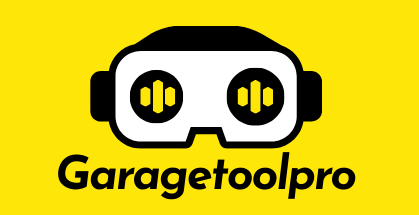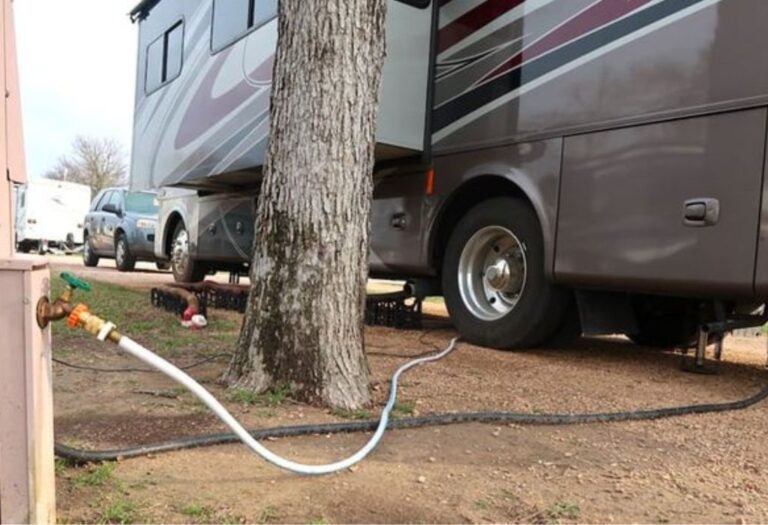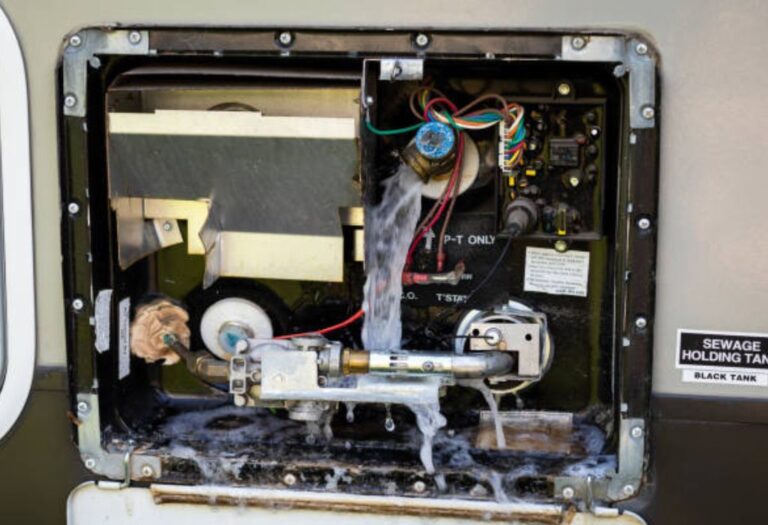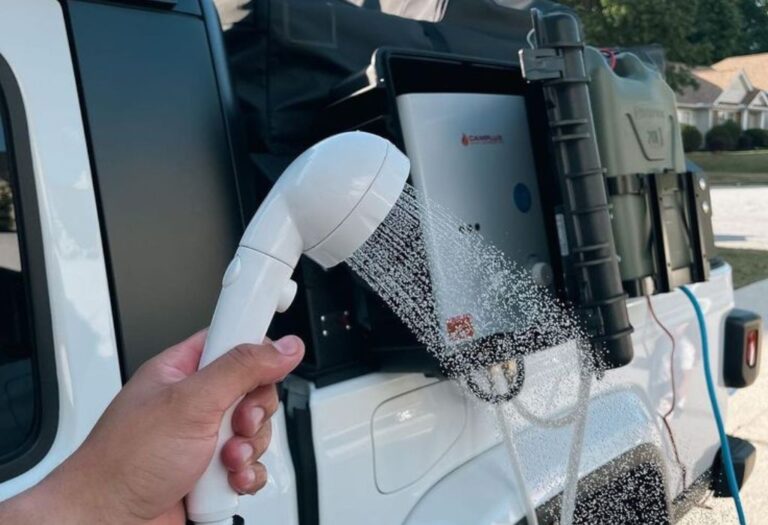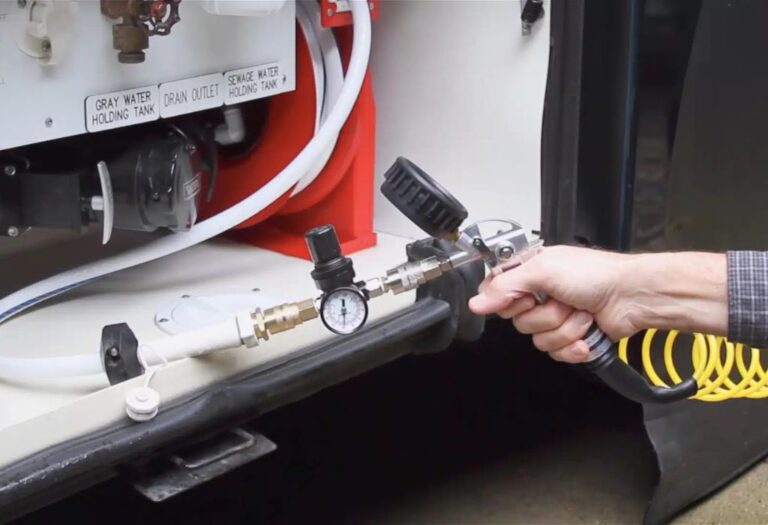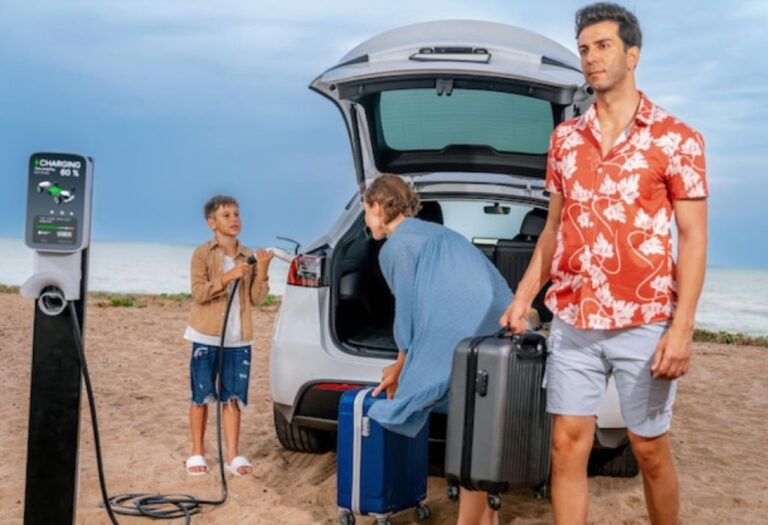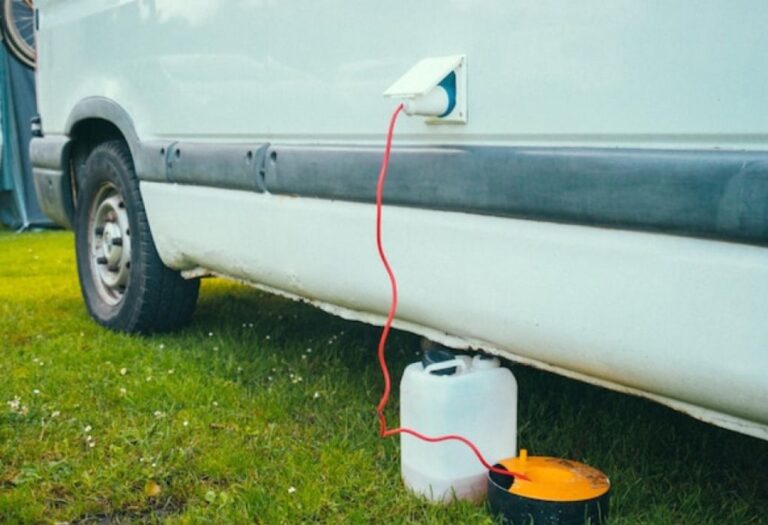How Long Should an RV Water Pump Run Normally?
magine setting up camp after a long drive, and suddenly the water pump starts humming every few minutes. The question arises: how long should RV water pump run before shutting off.
An RV water pump is designed to deliver pressurized water on demand, but constant cycling often signals hidden issues.
If left unchecked, this can drain your battery and wear down the pump faster than expected.
Industry experts note that RV plumbing systems are designed to operate safely between 40–55 PSI when using a regulator, protecting pipes and fixtures from excess pressure (source).
Pumps work on a similar pressure range, starting at cut-in and stopping at cut-out settings.
Adding upgrades like an accumulator tank has been shown to reduce cycling, improve water flow, and extend pump life (source).
Understanding these basics helps you know what’s normal and what’s not.
This guide breaks down how long your pump should run, why it might be running too often, and how to troubleshoot issues for a quieter, longer-lasting system.
Quick Answer: How Long Should an RV Water Pump Run?
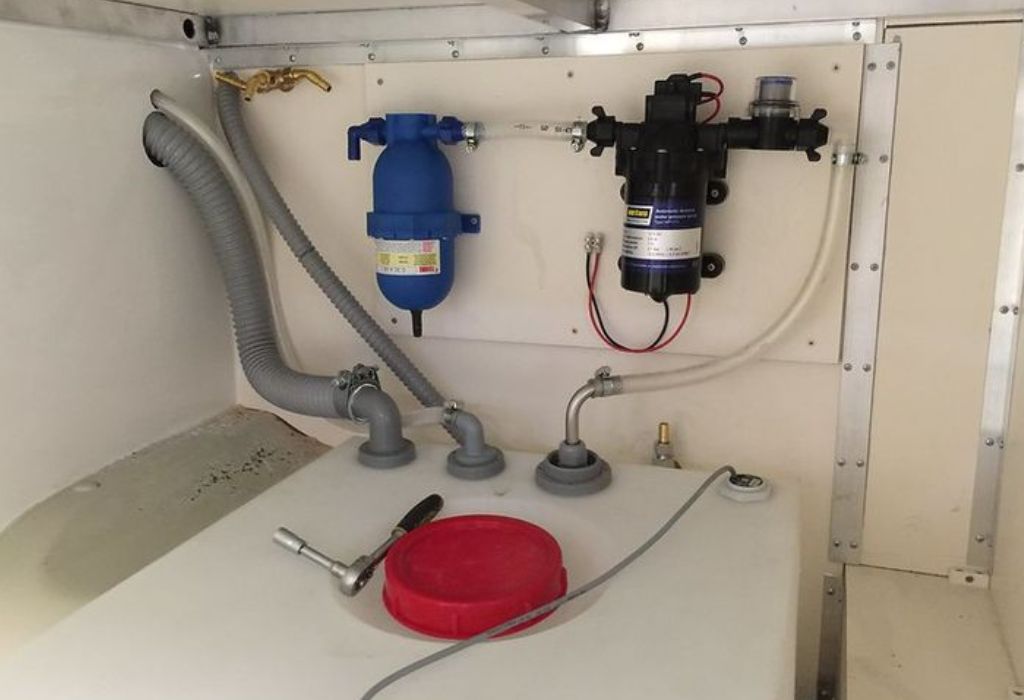
A demand pump should only run while water is flowing through an open faucet or fixture. Once the system pressure is restored, it should shut off completely.
If faucets are closed, the pump should remain silent for hours. A brief one-to-two second run every several hours may occur due to temperature changes or very small leaks.
Q&A
How long is a normal “post-use” run?
Only a few seconds until system pressure is restored.
Is one or two short cycles daily normal?
Yes, occasional single cycles may happen.
Should it ever run continuously with taps closed?
No, that indicates leaks or a faulty pressure switch.
Does regulator PSI affect pump cycling?
Yes, too much or too little pressure influences cycling.
What PSI is recommended for safe operation?
Around 40–55 PSI using a regulator (source).
How RV Water Pumps Work (Cut-In/Cut-Out and Duty Cycle)
Most RV water pumps are 12V diaphragm pumps that work on a pressure-based system. They start running when pressure drops below the cut-in setting and stop when it reaches the cut-out level.
Common cut-out pressure is about 45–55 PSI, which matches safe plumbing limits. Duty cycles also matter, as some pumps are designed to run continuously while others have time limits.
What is cut-in pressure?
It is the PSI where the pump starts automatically.
What is cut-out pressure?
It is the PSI where the pump shuts off.
Do all pumps allow adjustment?
Some models have adjustable switches, but many are factory set.
How does duty cycle affect run time?
It limits how long the pump can safely run without overheating.
Do all pumps handle continuous duty?
No, always check manufacturer guidelines.
What Counts as Excessive? Short-Cycling vs. Constant Running
Short-cycling happens when the pump turns on and off quickly even with minimal demand. This is often caused by leaks, clogged filters, or no accumulator tank.
Constant running with all faucets closed indicates a more serious issue such as a failed check valve, significant leak, or a misadjusted pressure switch.
Q&A
Is cycling every 30 seconds normal?
No, that suggests short-cycling.
What about every 2–5 minutes?
Likely a leak or thermal expansion in the system.
Is every 5–7 hours okay?
Yes, that can be considered acceptable.
What if the pump never shuts off?
Shut it down immediately and inspect for leaks.
Can clogged filters cause rapid cycling?
Yes, debris in strainers or filters often leads to cycling.
City Water vs. Tank and Pump: When Should the Pump Be Off?
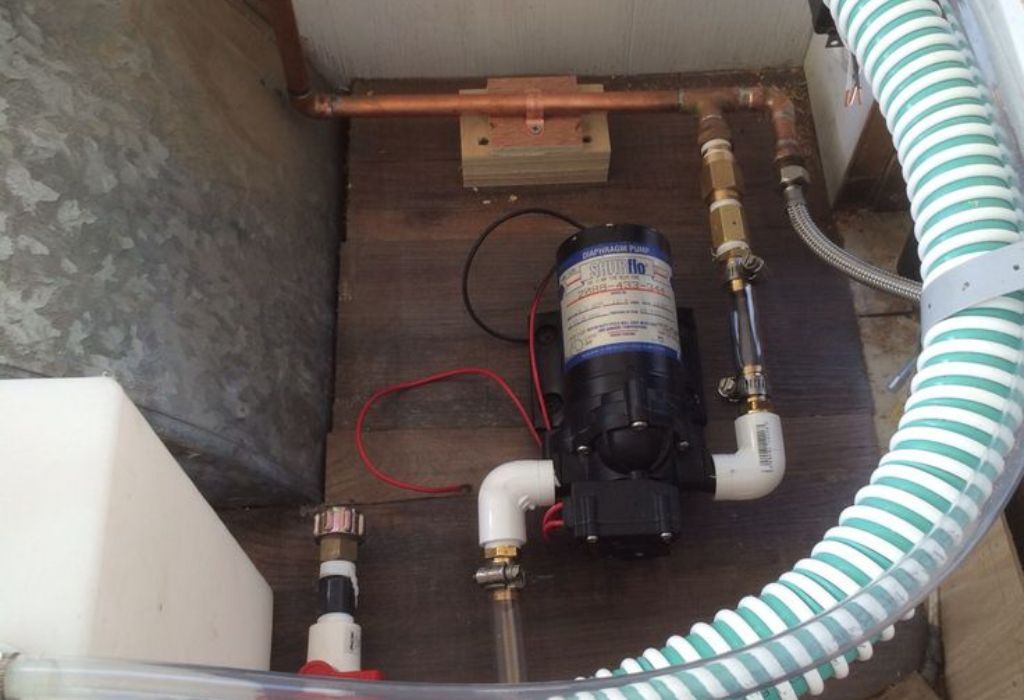
When connected to city water, the pump should be turned off completely. The city supply already pressurizes the system when regulated properly.
Leaving the pump on with city water can hide leaks and cause unnecessary wear. The pump’s internal check valve should prevent backflow, but failures can allow tank refilling.
Q&A
Should I use the pump on city water?
No, shut it off.
Can the pump boost weak city pressure?
Not directly; switch to tank and pump for stronger pressure.
Why is my tank filling on city water?
A leaky check valve is the cause.
What PSI should I regulate city water to?
Around 50–55 PSI for most RV systems.
Is using both sources harmful?
Yes, it stresses the plumbing and pump unnecessarily.
Troubleshooting: Why the Pump Runs Too Long or Too Often
Frequent cycling or long run times usually point to leaks, air in lines, or regulator issues. Start by turning off all faucets and checking if the pump still cycles.
Inspect fittings, toilet valves, and the outdoor shower for drips. Clean the pump’s strainer and inline filters, as clogs often cause rapid cycling.
Q&A
Why does my pump surge every few seconds?
A clogged filter or lack of accumulator.
Why does it run a long time after refilling the tank?
Air needs to be purged from the lines.
Why won’t it shut off on city water?
Check regulator settings and fixture valves.
Why is my fresh tank filling up on its own?
The pump’s check valve may be failing.
Can leaks be small but still trigger cycling?
Yes, even minor drips can drop pressure and start the pump.
How Long Can It Safely Run Continuously?
During heavy demand, such as a long shower, pumps may run for several minutes at a time. Many models can handle extended use, but some have a duty cycle of around 15 minutes.
Continuous running beyond design limits risks overheating and premature failure. Adding an accumulator helps extend off-times between cycles.
Q&A
Is 10 minutes of continuous running safe?
Yes, for most pumps but check the manual.
Can a pump run all day?
No, that risks overheating.
Does an accumulator reduce total run time?
It lengthens breaks between cycles.
What about battery drain during long runs?
More cycling increases current draw and drains batteries faster.
Should the pump be off overnight?
Yes, turn it off to prevent flooding in case of leaks.
Upgrades That Make the Pump Run “Just Right”
Adding an accumulator tank reduces pump cycling and noise. It stores pressure to smooth water flow and decrease the number of on/off events.
A quality regulator ensures city water stays at a safe pressure, typically 50–55 PSI. Vibration isolation mounts and clean aerators also reduce noise and pulsation.
Q&A
Is an accumulator worth it?
Yes, it protects the pump and improves water flow.
What PSI should I set my regulator at?
50–55 PSI is safe for most RVs.
Will cleaning aerators help?
Yes, clogged aerators worsen pulsating water flow.
Can upgrading the pump fix cycling?
Not unless leaks and filters are already addressed.
Do isolation mounts reduce noise?
Yes, they help quiet vibrations.
Best Practices: Simple Rules for Confident Operation
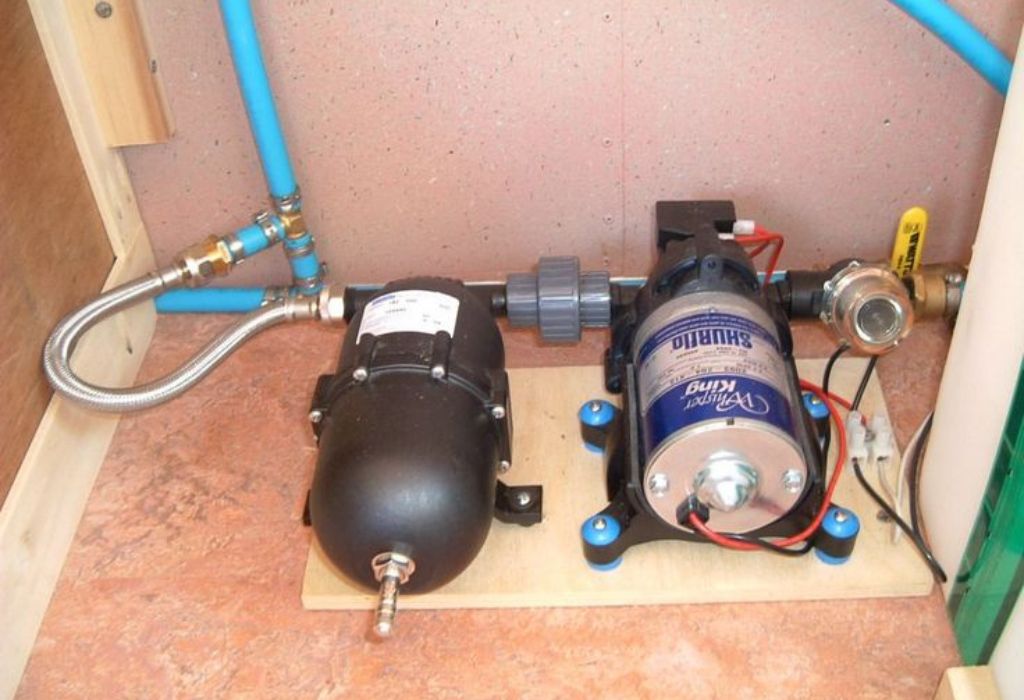
Follow a few simple rules to keep your pump running correctly. Use the pump only with the freshwater tank, and turn it off when on city water.
Always shut off the pump when leaving the RV or overnight to avoid unnoticed leaks. Clean strainers and sanitize the system regularly to maintain seals.
Q&A
What’s the main rule of pump operation?
If faucets are closed, the pump should be silent.
How often should I sanitize?
At least once per season or after storage.
What if pump noise is too loud?
Add isolation mounts and an accumulator tank.
How to handle weak park water pressure?
Switch to tank and pump for steady flow.
Should the pump stay on while driving?
Yes, if you need water access, but off is safer if not in use.
Conclusion
So, how long should RV water pump run? The answer is simple: only while water is in use, and it should remain silent when faucets are closed.
Occasional single cycles every several hours are normal, but frequent cycling signals leaks, clogged filters, or pressure switch problems.
Keeping city water regulated between 40–55 PSI and adding upgrades like an accumulator tank ensures smoother operation and extends pump life. Following these best practices gives you reliable water flow and peace of mind on every trip.
I’m David R. Coleman, the founder, lead writer, and lifelong tool enthusiast behind GarageToolPro.com. With years of experience in automotive repair, woodworking, and home DIY projects, I created this platform to share practical tips, detailed tool reviews, and step-by-step guides that help mechanics, hobbyists, and homeowners get the job done right the first time.
